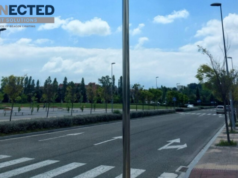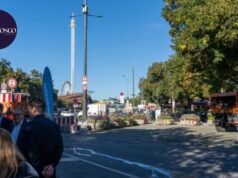The global growth of outdoor lighting technology over the past 150 years has had enormous public safety, security and economic benefits but also dramatically altered our night-time environment, with significant consequences for flora, fauna and the night sky.
To consider these impacts and what might be done about consequences of lighting at night, the Australasian Dark Sky Alliance (ADSA) hosted the largest ever Australian event dedicated to light pollution and dark sky preservation last month in Melbourne. The Valuing Darkness Symposium & Roundtable brought together 200 experts in public lighting design, environmental science, astronomy, urban planning, public health and policymaking to discuss the importance of darkness to humans and the wider environment.
Perhaps most importantly, ADSA was looking to provide actionable insights to help address light pollution in Australia. A Roundtable held on the final day of the event elicited many ideas about what could be done and ideas these were brought together at the end of the day around eight areas for action:
1. Education – After hearing two days of compelling evidence that lighting at night needs to be regarded a pollutant, there was a strong consensus that more community education is needed to raise awareness about the impacts of artificial lighting at night, the values of darkness, the success stories in addressing the problem and the promotion of events. There was also discussion about the vital need for targeted education of key stakeholder groups (e.g., councils, road authorities, utilities, consultants and lighting equipment suppliers).
2. Communication & Collaboration – There were also many calls for improved communication and collaboration across key stakeholder groups. This was seen as being essential to achieve better alignment between human health, wildlife and dark sky objectives. A key underlying driver of the need for improved communication and collaboration was because so many participants cited either missing guidance or conflicting requirements in current lighting standards, policy, regulation and legislation. In this context there was strong support for further multi-stakeholder events (such as the Valuing Darkness Symposium & Roundtable). The specific need for better guidance material to help assess the biological impacts of lighting at night and, to provide clear advice and templates for local government (including model DCP/DA conditions) were also raised.
3. Research – A number of participants cited the critical need for more research on the impacts of artificial lighting at night both on specific species and on whole ecosystems. The need for regular full spectrum imagery of artificial lighting at night was also raised as essential for providing a solid baseline and objective evidence of progress.
4. Dark Sky Places & Communities – The Symposium that preceded the Roundtable featured presentations on several of the Dark Sky Places that have been declared in Australia and there was strong support for more Dark Sky Places and communities to help showcase what can be achieved.
5. Lighting Designer & Equipment Selection – Many stakeholders at the Roundtable recognised the key role of those making lighting design and equipment selection decisions. This includes not just trained lighting designers but also a wide range of electrical engineers, lighting equipment suppliers, electrical contractors and facilities managers who may have little to no training in mitigating light pollution. There is an urgent need to for training of these groups in best practice strategies for minimising the impact of artificial lighting at night. With regards to properly qualified lighting designers, there was a recognition that their involvement is needed right through project construction and commissioning to ensure that projects were actually built and set-up for operation as designed.
6. Government
The Roundtable highlighted several areas where government could play an important role in mitigating the impacts of lighting at night. Broadly, these were in the following:
- Consultations – Formal government-directed consultations are needed with the objective of leading to nationally supported policy, regulatory and legislative outcomes
- Policy – Australia should set national targets for lighting at night that aim to see pollution levels increase slower (or decrease faster) than the global average
- Legislation – To limit light pollution there should be minimum legislated requirements including mandating of AS/NZS 1158, AS/NZS 4282, the National Light Pollution Guidelines and NATA testing of luminaires as meeting appropriate requirements.
- Regulation To Facilitate Widespread Adoption of Smart Controls – There should be cost-effective regulation in the National Electricity Market recognising the metering capabilities of smart controls to facilitate and encourage their widespread adoption across the entire national public lighting portfolio.
- Funding – Greater funding is needed for research, awareness, engagement, incentives and enforcement.
- Coordination – Better awareness and better coordination is needed between local, state and Commonwealth governments on policy, codes, regulation and legislation.
7. Standards – Updates to Australian Standards are needed to better align national standards with best practice international guidance.
8. Products – More commercially available luminaires are needed that meet appropriate requirements and that have been independently tested as is better promotion of all compliant luminaires.














